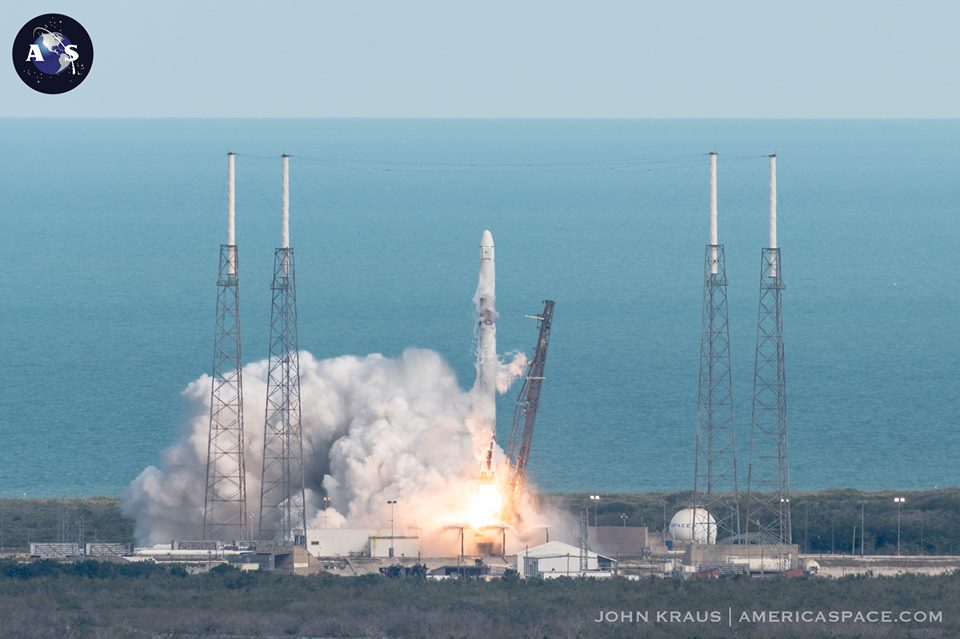
Kicking off a planned month-long run of missions from the East and West Coasts, which could see as many as five Upgraded Falcon 9 boosters spear for the heavens in the next 28 days, SpaceX has successfully delivered the CRS-14 Dragon mission into orbit, as part of its ongoing Commercial Resupply Services commitment to NASA. Liftoff of the 230-foot-tall (70-meter) rocket occurred during an “instantaneous” window at 4:30:38 p.m. EDT on Monday, 2 April, from Space Launch Complex (SLC)-40 at Cape Canaveral Air Force Station, Fla.
The Dragon—which is laden with some 5,800 pounds (2,600 kg)—of payloads, experiments and supplies for the incumbent Expedition 55 crew, will arrive at the International Space Station (ISS) on Wednesday, 4 April, and remain for about a month. Both the Upgraded Falcon 9’s first stage and the Dragon itself were “used”, the former having seen previous service on the CRS-12 mission in August 2017 and the latter having visited the space station on CRS-8 in April 2016.
Today’s launch comes only days after the spectacular flight of the latest batch of ten Iridium NEXT low-orbiting global mobile communications satellites from Vandenberg on 31 March. It represents part of an unprecedented run of missions for SpaceX, which has publicly declared its intent to fly more regularly than ever before in 2018, having already logged an impressive 18 missions last year. Including CRS-14, the Hawthorne, Calif.-headquartered launch services provider has flown six missions in four months, including the classified Zuma payload for an undisclosed U.S. Government sponsor, the geostationary GovSat-1 and Hispasat 30W-6 satellites, Spain’s Paz radar-imaging platform, the Iridium NEXT group and the long-awaited maiden voyage of the Falcon Heavy.
Yet for the month of April, SpaceX envisages no less than five missions. Following today’s launch of CRS-14, attention will turn back to SLC-40 for the planned 16 April flight of NASA’s Transiting Exoplanet Survey Satellite (TESS) to begin a two-year mission to search for exoplanets transiting across the disks of the brightest stars in the sky. Next, the focus will move to historic Pad 39A at the Kennedy Space Center (KSC), where the Bangabandhu-1 communications satellite for the Bangladeshi government is slated to ride uphill on 24 April. This is also the first flight of the new “Block 5” variant of the Upgraded Falcon 9, characterized by an approximately 7-8-percent thrust increase on all of its Merlin 1D+ engines and strengthened landing legs and improved reusability performance, including heat-shields on the engines, titanium-casted grid-fins and an improved flight control system.
Another batch of five Iridium NEXT satellites—co-manifested with NASA’s Gravity Recovery and Climate Experiment Follow-On (GRACE-FO) mission—will follow from Vandenberg’s SLC-4E on 28 April and the record-setting month is set to close out with the heavyweight SES-12 geostationary communications satellite from SLC-40 at the Cape on the 30th. If accomplished, this five-mission will bring to eleven the total number of missions launched by SpaceX within the first five months of 2018. However, with the postponement of Bangabandhu-1 from its original 5 April target date until near month’s end, it seems increasingly likely that the Iridium NEXT/GRACE-FO and SES-12 missions will slip into the May timeframe.
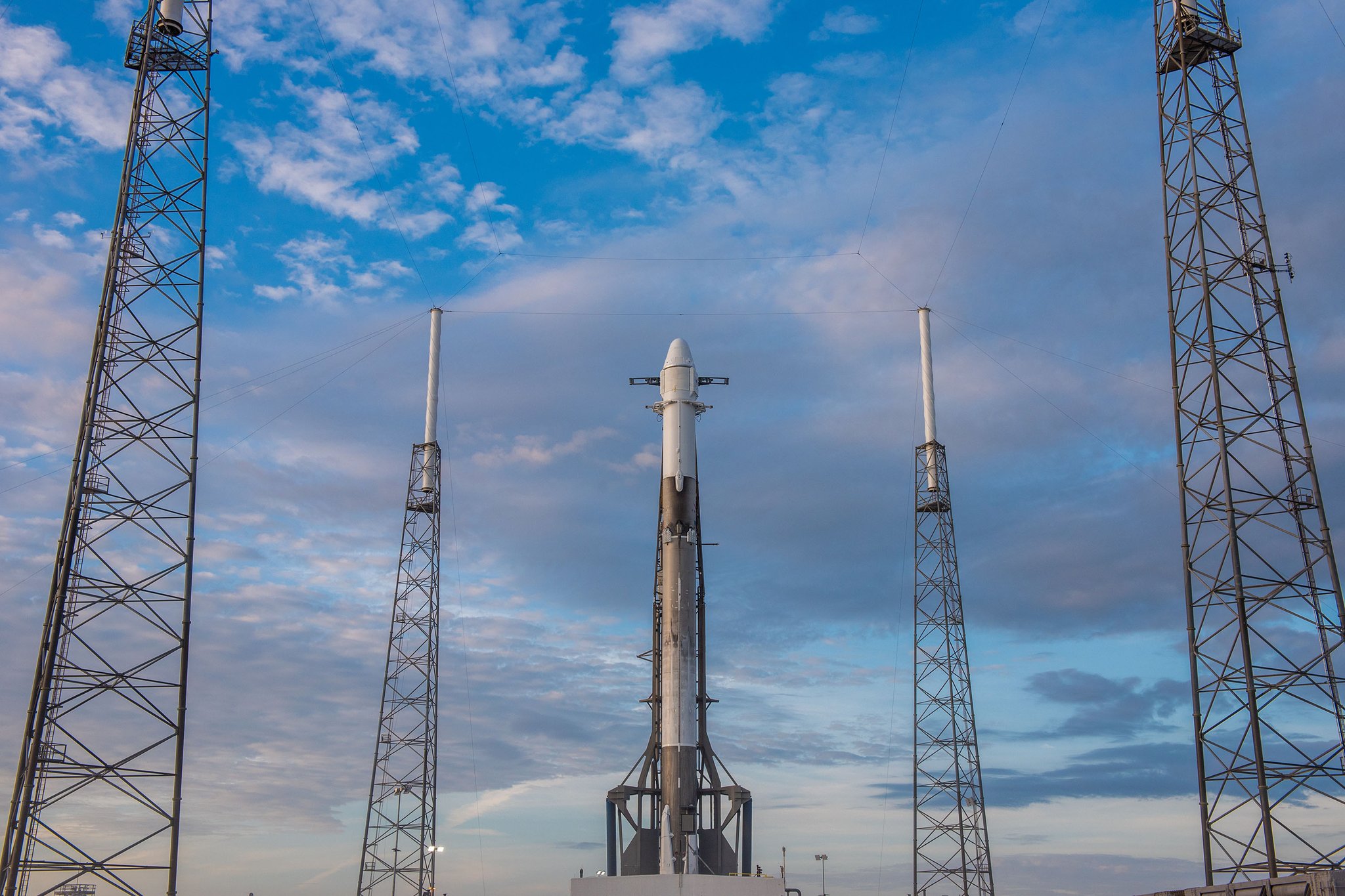
First out from the starting blocks, of course, was the CRS-14 Dragon, which is carrying a large complement of payloads to the incumbent Expedition 55 increment of Commander Anton Shkaplerov of Russia and his crewmates Scott Tingle, Drew Feustel and Ricky Arnold of NASA, Norishige Kanai of the Japan Aerospace Exploration Agency (JAXA) and fellow Russian cosmonaut Oleg Artemyev. Current plans are for Kanai to take the lead in operating the 57.7-foot-long (17.6-meter) Canadarm2 robotic arm on Wednesday for the capture and berthing of CRS-14 at the Earth-facing (or “nadir”) port of the station’s Harmony node. Backing up Kanai in the multi-windowed cupola will be Tingle.
A multitude of science experiments will be trekked uphill aboard Dragon. These include an investigation into improving the process of antibiotic release from high-water-content “hydrogels” which can cover large wounds. Provided by Elaine Horn-Ranney of Tympanogen, Inc., the results of this study could be used to treat military combat injuries and reduce the occurrence and severity of systemic infection and inflammation by delivering antibiotics directly to the wound site. Randall German of San Diego State University has provided an experiment to understand how microgravity affects the “liquid-phase sintering” process used to produce high-performance products from metal powders. And Guy Trudel of the University of Ottawa and The Ottawa Hospital in Ontario has provided the Marrow study to explore the effects of microgravity on bone marrow, blood cells produced in marrow and their recovery after space missions.
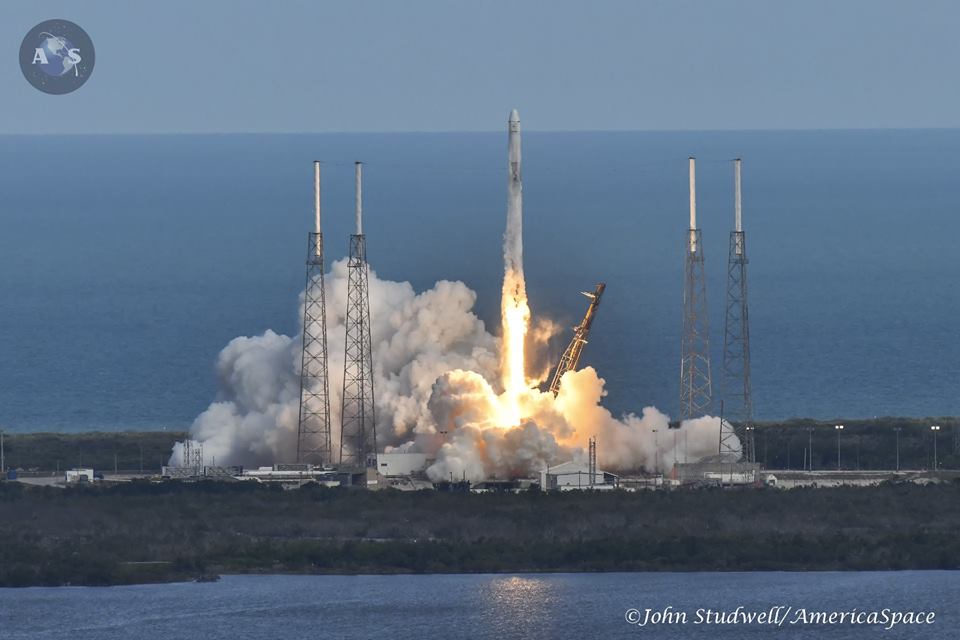
The principal “external” payloads on the mission, housed in the unpressurized “trunk” of the Dragon, are Denmark’s Atmosphere-Space Interactions Monitor (ASIM) and NASA’s Materials ISS Experiment Flight Facility (MISSE-FF). These will be robotically detached from the trunk, by means of Canadarm2, and installed in their operational locations. ASIM will reside on the exterior of Europe’s Columbus lab, whilst MISSE-FF will take a perch at Site 3 on the ExPRESS Logistics Carrier (ELC)-2 on the station’s S-3 truss.
The 690-pound (314 kg) ASIM has been provided by the National Space Institute at the Technical University of Denmark and will investigate the effects of severe thunderstorms on Earth’s atmosphere and climate, as well as assisting the development of long-term and short-term climate prediction models. The instrument will examine upper atmospheric lightning events—properly known as Transient Luminous Events (TLEs) and Terrestrial Gamma-Ray Flashes (TGFs)—which occur at much higher altitude than traditional lightning and storm clouds, with a process of run-away electron discharge suggested as the key driver. From its perch on the external payloads platform of Columbus, ASIM’s day-and-night observations of the Home Planet will also quantify the effects of gravity waves on the mesosphere, study high-altitude cloud formation and determine the characteristics of thunderstorms which make them effective in the perturbation of the high-altitude atmosphere. These findings are expected to aid the development of future atmospheric models, as well as informing climate and weather predictability.
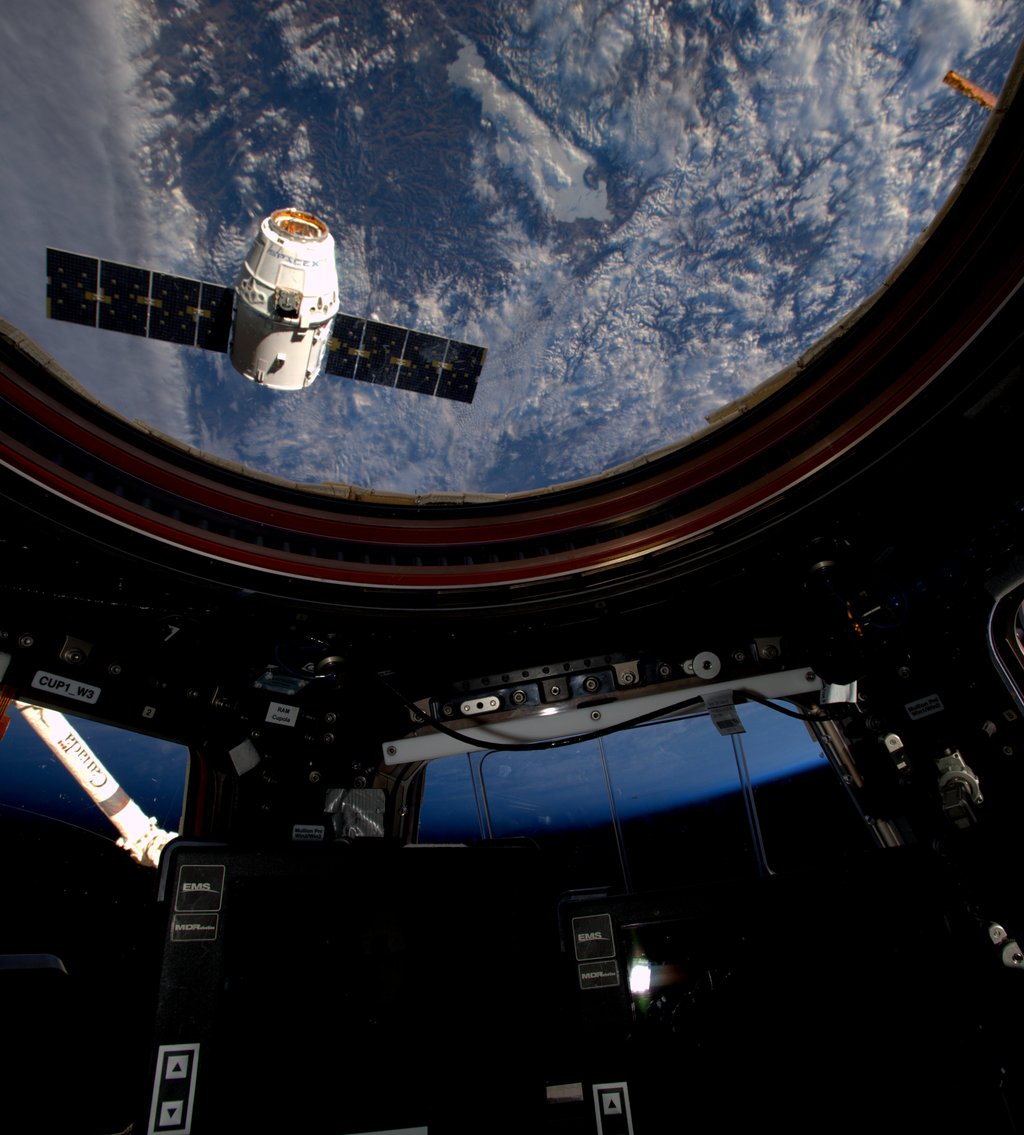
Meanwhile, MISSE-FF, provided by Alpha Space Test and Research Alliance, will see a payload flight facility permanently installed onto the station’s exterior to test 138 materials, coatings and components in the harsh temperature, ultra-high vacuum, charged-particles and ultraviolet radiation and atomic oxygen extremes of low-Earth orbit. It is hoped that MISSE-FF will enable benefits across a range of industries, including advanced manufacturing products from protective clothing for astronauts and enhanced solar cells. The facility is a continuation of the MISSE-1 through MISSE-8 payloads—launched to the space station aboard successive Space Shuttle missions between August 2001 and May 2011—but is discrete from its predecessors, in that it does not require astronauts to perform Extravehicular Activity (EVA) in support of set-up and operations.
MISSE Sample Carriers (MSCs) will be robotically installed and removed from MISSE-FF over periods of approximately six to 12 months by means of Canadarm2. Samples removed will be robotically transferred, via the MISSE Transfer Tray (MTT), through the airlock of Japan’s Kibo lab and into the station’s habitable environment for subsequent return to Earth. When fully operational, MISSE-FF will be located at Site 3 on the ExPRESS Logistics Carrier (ELC)-2 on the station’s S-3 truss. It will take the same spot as MISSE-8, which was removed by Expedition 36 spacewalkers Chris Cassidy and Luca Parmitano in July 2013.
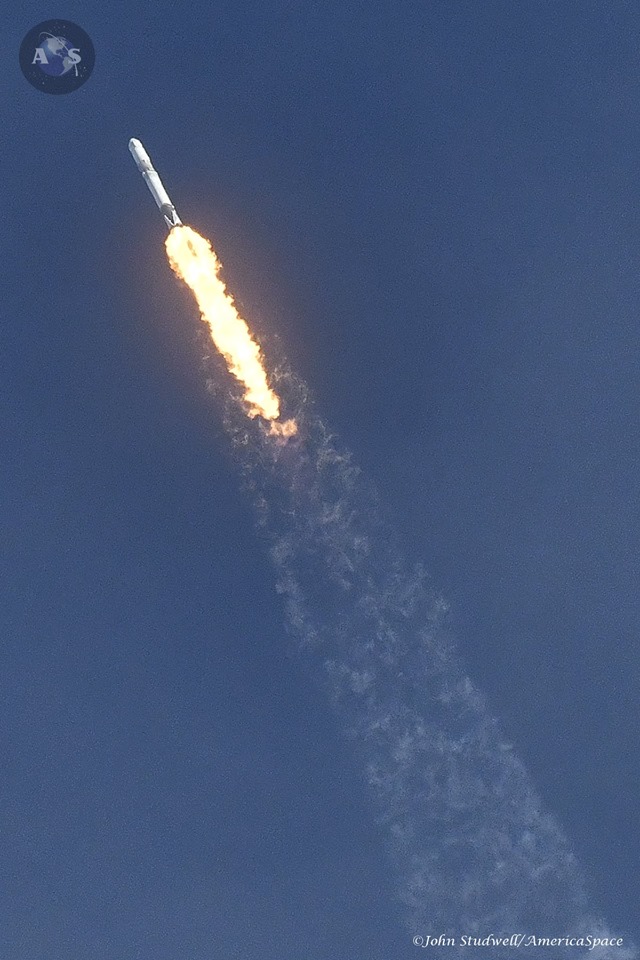
In readiness for CRS-14, the external payloads were loaded aboard Dragon’s trunk in the first half of March. A customary Static Fire Test of the nine Merlin 1D+ first-stage engines of the Upgraded Falcon 9 occurred on 28 March. “Static fire test of Falcon 9 complete,” SpaceX tweeted. “Targeting 2 April launch from Pad 40 in Florida for Dragon’s fourteenth mission to the @Space_Station.” The first stage had seen previous service on last August’s CRS-12 mission, making today’s launch the 11th time since March 2017 that a booster had been re-used.
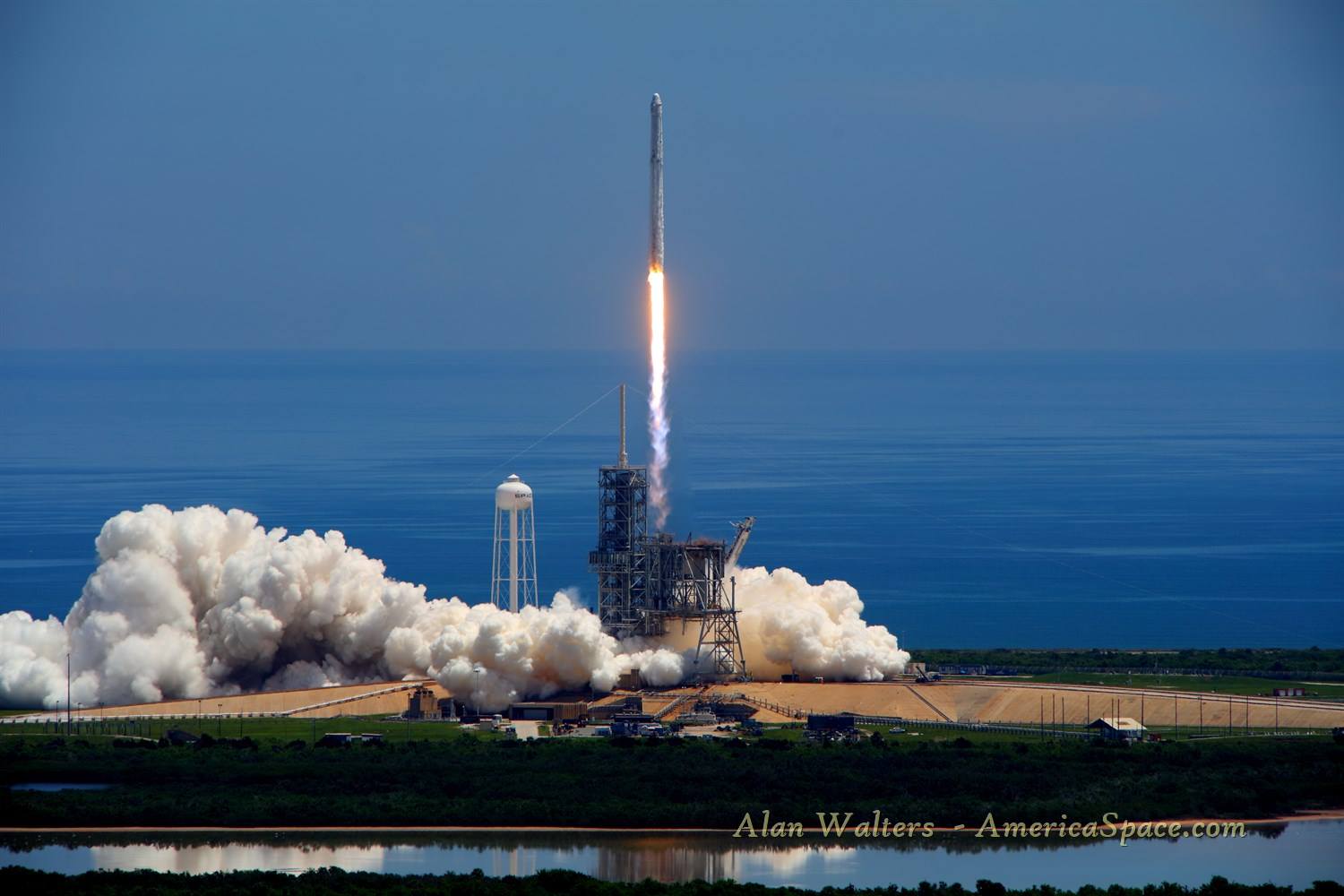
Weather conditions at the Cape were expected to be around 80-percent-favorable for both the primary launch attempt on Monday, 2 April and the backup attempt on Tuesday, 3 April, as a frontal boundary moved through the Florida Panhandle, pushed north towards the launch site and maintained a presence of cloudy skies and scattered light rain showers. “On Monday, the boundary will begin to dissipate over the Spaceport with gradually improving cloud conditions, but showers remain a slight risk,” noted the 45th Weather Squadron at Patrick Air Force Base in their L-3 briefing. “The primary launch weather concerns are flight through precipitation and cumulus clouds with the showers. Maximum upper-level winds will be from the northwest at 95 knots near 40,000 feet. On Tuesday, the boundary will continue to dissipate, decreasing the rain threat, but clouds may remain. The primary weather concerns remain cumulus and thick cloud layers that may develop along the boundary. Maximum upper-level winds will be from the west at 80 knots near 40,000 feet.”
As is customary for ISS-bound missions, today’s T-0 was “instantaneous”, with no wiggle-room for delays in the countdown. Loading of the booster with liquid oxygen and a highly refined form of rocket-grade kerosene (known as “RP-1”) got underway less than an hour prior to launch. Passing T-10 minutes, the terminal countdown autosequencer was initiated and the Merlin 1D+ engines were chilled, ahead of ignition. At T-2 minutes, the Air Force Range Safety Officer declared all ground assets as “Go for Launch” and the Upgraded Falcon 9 transitioned to Internal Power and assumed primary command of all critical functions, going into “Startup” at T-1 minute. At this stage, the Niagara deluge system began flooding the pad surface with 30,000 gallons (113,500 liters) of water, per minute, to suppress the acoustic energy. The Eastern Range declared its readiness as “Green”.
Three seconds before liftoff, the Merlins roared to life, pumping out a combined thrust of 1.5 million pounds (680,000 kg) of thrust. Liftoff occurred on-time at 4:30:38 p.m. EDT. Immediately after clearing the tower, the Upgraded Falcon 9 executed a combined pitch, roll and yaw program maneuver to establish itself onto the proper flight azimuth to inject the CRS-12 Dragon into orbit at an inclination of 51.6 degrees to the equator. Passing the point of maximum aerodynamic turbulence (colloquially dubbed “Max Q”) at 70 seconds into the flight, the booster later throttled back two of the Merlins to reduce the rate of acceleration at Main Engine Cutoff (MECO). Two and a half minutes after launch, the seven remaining Merlins fell silent and the first stage separated from the stack.
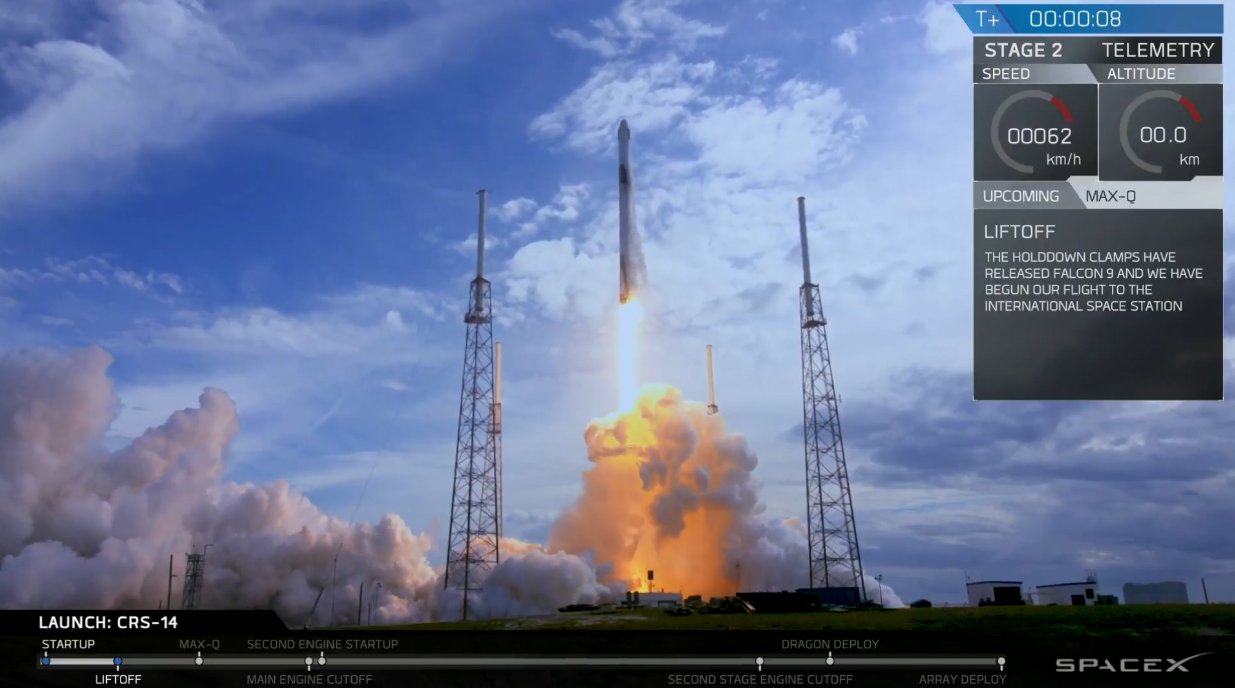
It was now the turn of the second stage, equipped with a single, restartable Merlin 1D+ Vacuum engine, capable of 210,000 pounds (92,250 kg). This now picked up the baton to deliver its payload into low-Earth orbit. During its burn, the protective nose fairing—covering Dragon’s berthing mechanism—was jettisoned and the spacecraft separated from the second stage a little under ten minutes after launch. Shortly thereafter, its pair of power-generating solar arrays were deployed. By 2.5 hours into the flight, Dragon’s Guidance and Navigation Control (GNC) Bay Door was opened to expose critical rendezvous sensors, ahead of the two-day journey to the ISS.
“Dragon is on its way to the International Space Station,” SpaceX tweeted at 4:48 p.m. EDT. “Capture by @Space_Station crew set for Wednesday morning.”
As with its predecessors, CRS-14 will approach the space station along the “R-Bar” (or “Earth Radius Vector”), which provides an imaginary line from Earth’s center, effectively approaching from “below”. In so doing, Dragon will take advantage of natural gravitational forces to brake its final approach and reduce the need to perform excessive numbers of thruster firings. By Wednesday, it will reach a “Hold Point” about 1.5 miles (2.4 km) from the station, whereupon it must pass a “Go/No-Go” poll of flight controllers in order to draw nearer.
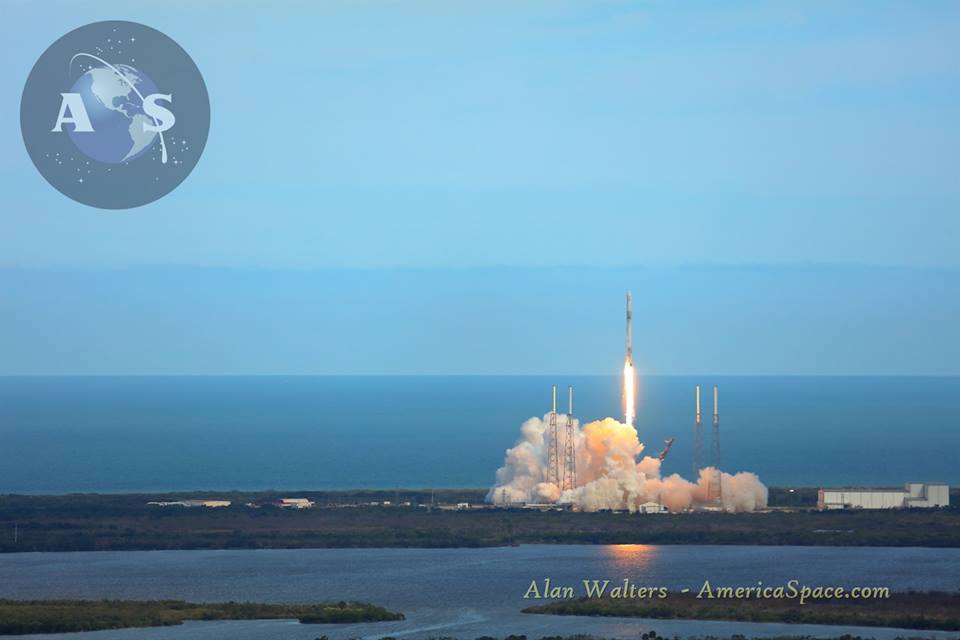
Further polls and holds will be made at distances of 3,700 feet (1,130 meters) and 820 feet (250 meters), after which Dragon will creep toward its target at less than 3 inches (7.6 cm) per second. Critically, at 650 feet (200 meters), it will enter the “Keep-Out Sphere” (KOS), which provides a collision avoidance exclusion zone, and its rate of closure will be slowed yet further to just under 2 inches (5 cm) per second.
After clearance has been granted for the robotic visitor to advance to the 30-foot (10-meter) “Capture Point”, the final stage of the rendezvous will get underway, bringing Dragon within range of the station’s 57.7-foot-long (17.6-meter) Canadarm2 and capture by Expedition 55 Flight Engineers Norishige Kanai and Scott Tingle. Both crew members will be based in the multi-windowed cupola for the operation. Capture is currently targeted on Wednesday, 4 April, with ground commanding to berth Dragon at the Earth-facing (or “nadir”) port of the Harmony node. It is expected that CRS-13 will remain attached to the space station until early May.




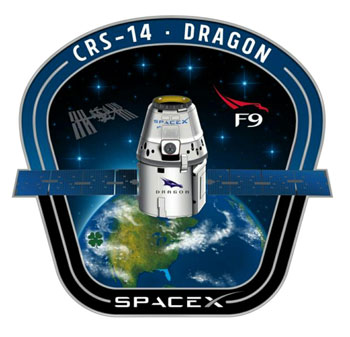
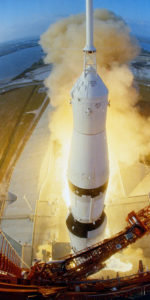
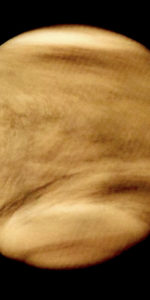
It launched a dragon capsule, so there was no fairing.